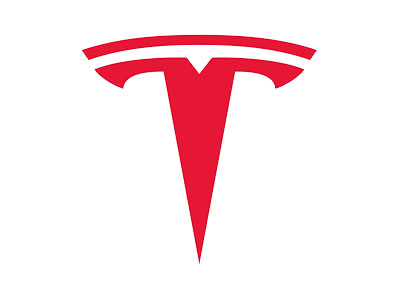特斯拉(TSLA.US)2025年第一季度业绩电话会
文章语言:
简
繁
EN
Share
Minutes
原文
会议摘要
Tesla's first-quarter 2025 update highlights its focus on large-scale autonomous vehicles and humanoid robots, achieving record profits in energy storage, and addressing supply chain challenges. The company anticipates selling fully autonomous rides in Austin by June and expects to have thousands of Optimus robots in operation by year-end, scaling up to millions within four to five years. Tesla also discusses its efforts to localize supply chains and mitigate tariff risks, while emphasizing its belief in becoming the world's most valuable company due to its focus on autonomy and sustainable abundance.
会议速览
During Tesla's first quarter 2025 earnings call, discussions covered the company's business outlook and highlighted significant work being done to address government inefficiency and fiscal deficits.
The team has made significant progress in tackling waste and fraud, facing backlash from beneficiaries of these practices. The choice lies between letting the unsustainable waste continue or fighting to correct the country's course. Collaboration with the administration is deemed crucial, emphasizing that the nation's prosperity is intertwined with all entities, including major corporations. Protests against these measures are revealed to be organized and funded, driven by those wishing to continue receiving fraudulent funds.
With the foundation team in place and financial house in order, the individual plans to significantly reduce time spent on government matters post-May, focusing instead on Tesla while ensuring continued prevention of waste and fraud.
Despite past crises and near-death experiences, the company is optimistic about its future, focusing on large-scale autonomous vehicles and humanoid robots. The value of achieving this at low cost and scale is described as staggering, with potential to make Tesla the most valuable company globally, possibly exceeding the combined value of the next five companies.
Fully autonomous rides are expected to start selling in Austin by June next year, significantly impacting the company's financials around the middle of next year, with exponential growth anticipated thereafter.
The company has been working on localizing its supply chains to mitigate logistics risks and costs, positioning it less affected by tariffs compared to competitors. The CEO advocates for lower tariffs, emphasizing the decision rests with the U.S. President.
Tesla is focusing on achieving full autonomy for its vehicles, starting with the Model Y in Austin, aiming to transform most of its fleet into robotic taxis. The company is developing a generalized solution for autonomy that can scale across different cities and jurisdictions, enabled by AI and a custom-designed AI chip. Additionally, Tesla anticipates rapid scaling of its Optimus robots, expecting thousands to be operational in factories by the end of the year and aiming for millions of units per year within five years.
In 2029, the energy business thrives as megapacks significantly enhance grid energy output by enabling power plants to operate at peak capacity 24/7. Utility companies are scaling up purchases of gigawatt-class battery factories to buffer energy, charging batteries at night and discharging during the day, unlocking a massive increase in total energy output. The stationary energy storage business is projected to scale to terawatts.
Despite Q1 being a typically slow period due to winter weather, Tesla successfully transitioned to the new version of the Model Y, the world's best-selling car, achieving a remarkable 1.1 million unit annual output. This challenging production changeover was executed simultaneously across factories worldwide, showcasing the company's impressive operational capabilities.
The focus lies on achieving a future marked by sustainable abundance for all, leveraging affordable AI robots, aiming for environmental friendliness and viability. Acknowledgment is given to a team's efforts during challenging times, with a commitment to leading towards future successes.
The company successfully updated all factories for the world's best-selling car within a quarter, achieving a record gross profit in energy storage. Despite production pauses and external challenges, legacy Model Y vehicles sold out in major markets.
The discussion highlights the benefits of Full Self-Driving (FSD) supervised mode, including improved safety and enhanced mobility for customers. It also addresses the decline in auto margins due to various factors, the success in the energy storage business despite deployment declines, and the positive reception of the new Powerwall. Additionally, it covers the challenges in services and other margins, the increase in operating expenses due to AI and vehicle program developments, and the significant reduction in other income primarily due to Bitcoin market losses.
The company discusses its advantage in managing tariffs due to high USMCA compliance, the upcoming impact of Section 232 tariffs on profitability, challenges in sourcing battery cells amid tariffs, efforts to secure non-China based suppliers, and the expensive implications of onshoring manufacturing equipment from outside the US.
Despite facing near-term challenges due to tariffs and brand image, Tesla remains focused on its strategy of offering competitive products. Key initiatives include launching cheaper models, advancing Full Self-Drive (FSD) features, and initiating pilot robot programs, aiming to overcome current hurdles and drive future development.
Tesla anticipates its vehicles will be capable of fully autonomous paid rides in Austin by June and expand to other US cities by year-end. Large-scale autonomy is predicted for the second half of next year, with millions of Teslas expected to operate fully autonomously. The discussion highlights the potential need for localized parameter sets for different driving conditions, such as snowy weather, to optimize performance. Tesla's approach is likened to human driving, emphasizing the strengths and weaknesses of digital neural nets and cameras compared to biological neural nets and eyes. The company's AI models are noted for their generalizability, capable of adapting to various driving styles and environments, including China, through a mixture of experts strategy.
Validation of self-driving cars presents a long-tail problem due to rare critical incidents, making it difficult to measure improvement or regression. Sophisticated simulations, including neural network-based video generation, are essential to ensure safety and measure progress, as real-world testing alone is insufficient.
Emphasizes the necessity of extensive driving tests to identify rare issues, suggesting the use of multiple vehicles to simulate years of use in a few months, highlighting the significance of video evidence from China.
The discussion highlights the bold experimentation of Chinese consumers with autonomous driving features, notably a Tesla being tested on a perilous mountain road, showcasing the adventurous spirit and trust in technology.
The team discusses cyber cap validation, planning for significant builds in Q1 and Q2, and the large-scale installation of equipment at Giga Texas, with production predicted to commence next year.
The discussion clarifies ongoing developments at Tesla's Gigafactory in Austin, emphasizing its massive size and the concurrent construction of new facilities alongside current production. It also addresses the anticipated availability of Full Self-Driving (FSD) unsupervised mode for personal use in privately owned vehicles.
The company emphasizes safety in testing autonomy, aiming for its technology to be significantly safer than manual driving. Plans include confirming the system's reliability before full deployment, targeting functionality for personal use by year-end in multiple U.S. cities.
Tesla confirms plans to release more affordable models this year, focusing on low-cost ownership and utilizing existing factory lines. The company also discusses its perspective on the Roblox market and how it will compete against Waymo in terms of pricing, geofencing, and regulatory flexibility.
Tesla's significant investment in AI software and hardware, coupled with its large existing fleet and car manufacturing capability, gives it a competitive advantage in the autonomous vehicle market. The company aims to have millions of autonomous cars on the road in a few years, potentially leading to a substantial market share.
Discussions confirm that Model 1's autonomy remains on track for June, with no changes to the current model lines being implemented.
Many people fail to appreciate the advanced features and capabilities of the cars they own or can purchase today.
Vehicles autonomously drive from the factory to the end of the line and eventually to customers, navigating through busy factory environments without dedicated lanes.
The unboxed method is central to the low-cost, highly automated cybercat manufacturing process, featuring unprecedented levels of automation. Key development areas include precise assembly of large sub-components, derisking corrosion in aluminum structures, and ensuring safety through early crash testing. The next major test involves full-scale integration of the unboxed process for the upcoming product, with testing and drives scheduled in a couple of months.
The discussion highlights a groundbreaking production method for cars, emphasizing a transformative approach that reimagines manufacturing processes, likening the factory itself to a product as innovative as the vehicles it produces.
The discussion focuses on adopting a first principles approach to manufacturing to achieve a cycle time of producing one unit every 5 seconds, emphasizing the feasibility and speed of implementation on existing production lines, including comparisons to current fastest production times.
The discussion centers on optimizing design and operation in next-generation factories to achieve cycle times of five seconds or less, emphasizing the shift from traditional car production systems to autonomous lines for increased efficiency.
Tesla is mitigating global economic risks and adapting to challenges like tariffs and political biases through regionalizing parts supply, supplier diversification, vertical integration, and advanced analytics. Notably, the company is highly vertically integrated, owning lithium and cathode refineries, and has diversified sourcing for every component of its batteries to ensure supply chain resilience.
The dialogue highlights the strategies employed in optimizing battery cell production, emphasizing regionalization to reduce costs, enhance supply chain resilience, and mitigate disruptions. Key points include the benefits of local manufacturing, challenges in scaling production while maintaining low costs, and the importance of strategic partnerships for specialized components like semiconductors. The discussion also touches on recycling efforts and the pursuit of alternative sources for materials such as rare earth magnets to decrease dependency and exposure to supply chain vulnerabilities.
Tesla has been working to expand battery cell production in the US, both with vendors and through in-house programs, alleviating battery cell supply constraints for vehicles. Recent tariffs pose challenges to Tesla Energy, but the company anticipates resolving them timely with alternative sourcing and in-house production, focusing on aligning the right cells with specific needs.
Despite rumors and economic challenges, Tesla achieved record production rates and test drives globally in Q1, with no observed reduction in demand absent macro issues, highlighting a continued focus on affordability.
The status of the Tesla Optimus pilot line's operation is queried, including current production rates and potential effects of recent tariffs on scalability.
Despite facing significant manufacturing and supply chain hurdles, including obtaining export licenses for rare earth magnets from China, the project anticipates overcoming these challenges to produce thousands of Optimus humanoid robots by year-end. The complexity of the new product and the myriad unique components involved make precise production ramp predictions impossible, emphasizing the iterative process of addressing each limiting factor.
An analyst questions why Tesla's Model 3 and Model Y, despite being superior to traditional vehicles, have only captured 15% of their addressable market, seeking insights on potential strategies to increase market share.
In the near future, purchasing non-autonomous gasoline cars will be akin to using flip phones, highlighting a significant shift towards smarter, more advanced technology like autonomous vehicles.
The team is intensely working on resolving intermittent human intervention requirements in the public version of the FSD software, focusing on issues specific to Austin initially before addressing other regions. Efforts include improving the reliability of autonomy and system software, addressing long-tail unusual interventions, and integrating audio input to better handle situations like emergency vehicles.
The discussion covers the localized supply chain strategy for Optimus amidst geopolitical uncertainties and tariffs. It also addresses the initial scale of the robo-taxi launch, anticipating a cautious start with around 10 to 20 vehicles in Austin by late June or July, with plans to rapidly scale up afterward.
The discussion explores the possibility of implementing a multi-tiered pricing strategy for unsupervised FSD, akin to the previous model with Autopilot and FSD, highlighting the increasing value and flexibility as the system allows drivers more freedom, ultimately aiming for a level where drivers can fully divert their attention from the road.
Discussions highlight the significant hurdles, including high tariffs and luxury taxes, faced by companies looking to enter India's automotive market, emphasizing the need for strategic planning despite its large middle-class potential.
The company discusses its direct photon counting technology enabling cameras to operate effectively under challenging conditions like sun glare and fog. Additionally, clarifications are provided on the upcoming affordable model, emphasizing its focus on affordability and utilizing existing production lines, rather than being a cheaper version of the Model Y.
In a recent interview, a prominent figure advocated for predictable tariff structures and free trade, discussing the impact of tariffs on global systems. The individual expressed concerns over the United States' dependency on China for drone manufacturing and the potential dominance of Chinese companies in humanoid robot development, while expressing confidence in their own company's leading position in these technologies.
要点回答
Q:What are the main challenges and goals of Elon Musk's involvement with the Department of Government Efficiency?
A:Elon Musk views his work in the Department of Government Efficiency as crucial to addressing the unsustainable deficit and potential bankruptcy of the United States, which he believes would also affect Tesla and other entities. He acknowledges that there is significant progress in addressing waste and fraud, but emphasizes the need to continue fighting for reform to prevent a return to wasteful practices. Musk plans to reduce his time spent on government matters after May, although he will continue to devote a day or two per week to ensure that reforms are not reversed.
Q:What is Elon Musk's perspective on the future of Tesla and its capabilities?
A:Elon Musk is extremely optimistic about the future of Tesla, which he considers fundamentally based on large-scale autonomous cars and humanoid robots. He foresees that Tesla, with strong execution, will become the most valuable company in the world, potentially as valuable as the next five companies combined. He predicts that the financial prosperity of autonomy will become apparent around the middle of the next year, with the start of selling fully autonomous rides in Austin. Musk highlights the potential for a general solution to autonomy that can be scaled across jurisdictions and emphasizes the importance of keeping production costs low.
Q:What is Tesla's strategy regarding supply chain localization and its impact on the company?
A:Tesla's strategy is to localize its supply chains to make them more cost-effective and reduce logistics risks. The company has established localized supply chains in America, Europe, and China, which Musk believes puts Tesla in a stronger position compared to its competitors. Despite the potential challenges posed by tariffs, especially for companies with lower profit margins, Tesla's diversification should help mitigate such risks.
Q:What is Tesla's position on the role of tariffs and how will they impact the company?
A:Elon Musk acknowledges that the decision to implement tariffs is solely up to the President of the United States. While he advises the President that lower tariffs are generally good for prosperity, he recognizes that the ultimate decision lies with the elected representative of the people. Musk continues to advocate for lower tariffs rather than higher ones and suggests that Tesla's position on this issue is one of many factors the President might consider.
Q:What is the significance of Tesla's Optimus project and its expected timeline for deployment?
A:The Optimus project is significant as it aims to deploy thousands of robots in Tesla factories by the end of the year and scale up faster than any other product to reach millions of units per year within a few years. Musk predicts confidently that Tesla will reach a production rate of a million Optimus units per year by 2030. Optimus is designed to offer a generalized solution to autonomy, allowing for widespread application beyond Tesla's vehicle production, which Musk sees as a key advantage over competitors relying on specific solutions.
Q:What achievements in the energy sector has Tesla accomplished and what are its future expectations?
A:Tesla's energy business, particularly its Megapack, has been successful in enabling utility companies to significantly increase their total energy output. Musk predicts that the stationary energy storage business could scale to terawatt-hours, indicating an enormous potential growth. Tesla's Model Y production transition, which involved updating factories worldwide and overcoming near-term headwinds, is also highlighted as a major achievement, with the continued goal of delivering sustainable abundance to all.
Q:What were the contributing factors to Tesla's production challenges during the first quarter?
A:During the first quarter, Tesla's production challenges were multifaceted. The simultaneous update of all factories for the best-selling car in the world led to a lack of new Model Y inventory in most markets, which affected delivery timelines. Unwarranted hostility towards Tesla and its personnel in certain markets further impacted sales. Notably, despite these challenges, Tesla was able to sell out its legacy Model Y inventory in the U.S., China, and other global markets.
Q:What are the benefits of Tesla's Full Self-Driving (FSD) feature?
A:Tesla's FSD feature offers a personal chauffeur service that can take customers almost anywhere under supervision, providing mobility to people with disabilities and enabling older customers to travel comfortably and independently. The feature is deemed safer than human driving and is improving the lives of many individuals.
Q:What has been the financial impact of the decrease in auto margins?
A:Auto margins declined sequentially primarily due to a reduction in the total number of deliveries, lower fixed cost absorption, and lower regulatory incentives, offset by a slight increase in pricing and a milestone achievement for the energy storage business with the highest gross profit in a quarter.
Q:How is Tesla addressing the challenges posed by tariffs and capital investments?
A:Tesla is facing near-term challenges due to tariffs and capital investments, with the expensive process of bringing in equipment from China and the need to onshore manufacturing. The company's CapEx including tariffs is forecasted to be over 10 billion for the year, and they are exploring options to optimize costs and bring cheaper models to market soon. A start of production is still planned for June, and advancements in FSD features will continue despite these challenges.
Q:When is the Tesla FSD expected to achieve full autonomy in the US, and what is the plan for localized parameter sets?
A:Tesla FSD is currently on track to allow fully autonomous paid rides in Austin by June, and to extend to other cities in the US by the end of the year. There is an increasing likelihood of localized parameter sets for different regions, such as those with challenging weather conditions. While there is some value in a localized approach, Tesla's strategy remains to provide a generalized solution that will scale well, with the potential to create a mixture of experts for specific tasks while maintaining generalization.
Q:What is the approach to validation and safety in developing Tesla's FSD?
A:The approach to validation and safety in developing Tesla's FSD involves extensive real-world testing and sophisticated simulations. Despite the rarity of critical interventions, comprehensive testing is essential to ensure safety. Tesla is utilizing large numbers of Teslas in Austin for this purpose, employing advanced technologies like neural network-based video generation to test and refine the FSD system in a short period of time, thereby compressing the typical test cycle.
Q:What is the projected availability of Tesla's sleep test?
A:Tesla's sleep test, which allows users to fall asleep in their car and wake up at their destination, is expected to be available in many cities in the US by the end of this year.
Q:Is Tesla still on track to release more affordable models this year?
A:Yes, Tesla is still planning to release models this year, despite facing last-minute issues, which may initially slow down the ramp-up but are not expected to block production within the projected timeline. Tesla is focusing on affordability and flexibility with existing product lines to minimize costs without building new ones.
Q:Does Tesla view the Roblox market as a 'winner-takes-most' market, and how will its offering compare to Waymo's?
A:Tesla does not view the Roblox market as a 'winner-takes-most' scenario due to the high cost of Waymo's cars, which are made in low volume. Tesla's strategy involves offering AI solutions in cars that listen for sirens and are made in high volume. Tesla's confidence in its ability to compete stems from its built AI software and hardware teams and the planned deployment of millions of cars, which could earn a substantial market share.
Q:What advantages does Tesla have over competitors in terms of vehicle manufacturing and AI technology?
A:Tesla's advantages include lower manufacturing costs, high levels of automation, and the integration of AI solutions, like a sensor suite that is more expensive but offers advanced features. Tesla's existing car fleet, with updates, could also become autonomous, providing an advantage over competitors who are just starting software development. Tesla's focus on full-scale integration and revolutionary production systems aims to set a new standard for car manufacturing.
Q:Can you provide an update on Tesla's 'unboxed method' and its progress?
A:The 'unboxed method' is a significant part of Tesla's manufacturing process, aimed at achieving low-cost production and high levels of automation. Key developments include precise large sub-assemblies, corrosion protection, and early crash testing. The next big test is full-scale integration, expected in a few months, and while the initial line rate will be slower, it is anticipated that Tesla can achieve a cycle time of less than 5 seconds per car.
Q:How is Tesla positioning itself to adapt to global economic risks?
A:Tesla is mitigating global economic risks through regionalization of parts supply near factories in North America, Berlin, and Shanghai. High volume vehicle programs in North America have over 85% local content, and Shanghai vehicles over 95% local content. Tesla is also vertically integrated, owning lithium and cathode refineries, which helps protect against supply chain disruptions and allows for cost-effective production.
Q:What are the advantages of regionalization in production for Tesla?
A:The advantages of regionalization for Tesla include reducing working capital tied up in inventory due to the time it takes for products to transit the ocean, resilience against disruptions such as those seen during Covid, and the ability to bridge supply shortfalls between regions, although it may not be 100% efficient.
Q:How does Tesla manage supply chain disruptions, especially in specialized areas like semiconductors?
A:Tesla works closely with strategic partners and ensures there are secure supply chains in place for specialized areas such as semiconductors to minimize disruption and maintain production while setting up regional manufacturing for specific commodities.
Q:What is Tesla's strategy regarding battery supply and how is it addressing recent tariffs?
A:Tesla is expanding battery cell production in the US with both vendors and through its 4680 battery program. The company is also working on the upstream supply chain for battery cells in the US. Despite recent tariffs presenting challenges, Tesla has anticipated these challenges and is confident in resolving them in a timely manner, with some alternative sourcing and internal alignment strategies in place.
Q:Did Tesla experience any meaningful changes in order flow rates in Q1?
A:In Q1, Tesla ramped up production of its best-selling car across four global factories and reached the production rate of the previous Model Y within eight weeks. Despite economic strain and negative media in California, Tesla continued to see high interest, evidenced by record test drives globally, suggesting strong interest in the vehicles.
Q:What is the current status and production rate of Optimus, and how might tariffs affect its scalability?
A:Optimus is still in the phase of making thousands of units but most of the project will not be realized until the end of the year. Optimus production is constrained by the lack of an existing supply chain for various components and by specific issues like the need for permanent magnets that require an export license from China. Tariffs could impact the scalability of the production line moving forward.
Q:Why has Tesla's Model 3 and Model Y not taken over more of the auto market?
A:While Tesla's Model 3 and Model Y are considered superior to other cars, they have not taken a larger market share, prompting a question about whether Tesla understands the reason behind this and if there are plans to address it.
Q:What are the reasons for continued auto buyer purchases of non-Tesla vehicles, and how can Tesla address this?
A:The reason for continued auto buyer purchases of non-Tesla vehicles could be that in the future most people will not buy cars, and Tesla's strategy might be to not compete in a market where traditional cars will decline in demand. To address the issue, Tesla might focus on the broader implications of vehicle ownership in the future and the transition to autonomous vehicles.
Q:What does Tesla need to improve in its FSD software to reach a level where it no longer requires human supervision?
A:Tesla is working on a number of items to improve the Full Self-Driving software to the point where it no longer requires human supervision. This includes addressing issues that require interventions, such as handling emergency vehicles correctly, and ensuring system software reliability. The team is focusing on eliminating issues in a prioritized manner for the launch city of Austin.
Q:What are Tesla's thoughts on the future supply chain for Optimus, especially in light of tariffs?
A:Tesla is taking steps to further localize the supply chain for Optimus to reduce risks associated with geopolitical uncertainty. The specific impact of tariffs on the supply chain and the need for additional suppliers in the US are aspects that Tesla is observing and adapting to as they unfold.
Q:How does Tesla plan for the initial scale and ramp-up of the Optimus robot taxi?
A:Tesla is targeting the production of millions of Optimus vehicles in the second half of the next year. Initial launch scale and ramp-up specifics were not detailed, but the plan involves further localization of production and addressing any operational issues to ensure a smooth introduction of the robot taxi.
Q:What are the expectations for vehicle scaling in the early days of Tesla's autonomous driving feature?
A:The expectations for vehicle scaling in the early days of Tesla's autonomous driving feature are that it will start with about 10 or 20 vehicles on day one and then scale up rapidly after that. The team wants to ensure close attention is paid to how this initial scaling occurs.
Q:What pricing approach is Tesla considering for unsupervised versus supervised FSD?
A:Tesla is considering a multi-tiered pricing approach for unsupervised versus supervised FSD, similar to the pricing strategy for Autopilot versus Full Self-Driving (FSD) in the past. The current pricing is seen as too cheap by some users who have been using FSD, and Tesla is contemplating adjusting it in the future.
Q:How will Tesla's FSD evolve in terms of user interface and features?
A:Tesla's FSD is expected to evolve to allow users to perform more tasks while the car manages the road, potentially including activities like sleeping. This evolution will gradually relax the current focus on the driver maintaining attention on the road, thus enhancing the value proposition of FSD.
Q:What are the challenges Tesla faces with expanding into the Indian market?
A:The challenges Tesla faces with expanding into the Indian market include a 70% tariff on any car sent to India, plus a 30% luxury tax, making the cars significantly more expensive. This high cost results in a tax burden on local buyers rather than Tesla, creating anxiety about the value for money and prompting careful consideration of the right time to enter the market.
Q:How does Tesla's Direct Photon Counting technology address issues with cameras in adverse conditions?
A:Tesla's Direct Photon Counting technology addresses issues with cameras in adverse conditions such as sun glare and fog by using direct photon counting, bypassing the image signal processor, which helps maintain image quality even when pointed directly at the sun or in dense fog.
Q:What is the nature of the affordable model that Tesla is developing?
A:The nature of the affordable model that Tesla is developing is centered around affordability and using existing production lines, which limits the number of different form factors that can be produced. The focus is on creating a car that is affordable and does not compromise on quality, with Tesla aiming not to produce any worse a car than has been produced in the past.
Q:What are Elon Musk's thoughts on the U.S. President's handling of trade and tariff issues?
A:Elon Musk expresses that he is not an advisor to the President and that he does not make decisions for the President. However, Musk hopes that the President will consider his advice on trade and tariffs, especially regarding the need for predictable structures and free trade, and will weigh it differently in the future based on accuracy.
Q:Who is considered to be further ahead in developing physical AI, specifically on humanoid robots and drones?
A:China is considered to be further ahead in developing physical AI, particularly in terms of drones, with about 70% of global drone production and an almost complete supply chain dependency on China. For humanoid robots, Tesla is seen as the clear leader, with other companies possibly ranking second through ten, but with Tesla being number one.

Tesla, Inc.
Follow





